 1
Oct,2025
1
Oct,2025
Astelin vs. Other Allergy Nasal Sprays Comparison Tool
Recommended Sprays Based on Your Needs
| Product | Type | Onset Time | Duration | Cost Range | Best For |
|---|
- Consult your healthcare provider before starting any new medication.
- Some sprays require a prescription while others are available over-the-counter.
- Individual responses may vary; what works best depends on personal health factors.
TL;DR
- Astelin is a fast‑acting antihistamine spray; works within minutes but may cause a bitter taste.
- Steroid sprays like Flonase, Nasonex, and Rhinocort take longer to kick in but are better for chronic inflammation.
- Dymista combines antihistamine and steroid for both quick relief and lasting control.
- Cost varies: generic azelastine is cheapest, branded steroid sprays are pricier.
- Choose based on symptom pattern (quick flare‑ups vs. daily control), pregnancy safety, and insurance coverage.
When you’re battling seasonal or perennial allergic rhinitis a common inflammation of the nasal passages caused by allergens such as pollen, dust, or animal dander, picking the right nasal spray can feel like a guessing game. Astelin a prescription nasal spray that contains the antihistamine azelastine is often recommended for people who want fast symptom relief without the steroid‑related side effects. But there are plenty of alternatives on the market, each with its own strengths and trade‑offs. In this guide we’ll break down how Astelin works, compare it head‑to‑head with the most popular alternatives, and give you a decision‑making cheat sheet so you can match a spray to your specific needs.
What is Astelin (Azelastine)?
Astelin is a prescription nasal spray that delivers the antihistamine azelastine directly to the nasal lining. Unlike steroid sprays that suppress inflammation over a longer period, azelastine blocks histamine receptors almost immediately, cutting the itch, sneezing, and runny nose within minutes.
Key attributes:
- Dosage: two sprays per nostril twice daily (max 4 sprays per nostril per day).
- Onset: 5‑15 minutes for noticeable relief.
- Duration: effects last about 12 hours, so twice‑daily dosing is typical.
- Prescription status: requires a doctor’s prescription in the U.S., though many insurers cover it.
- Common side effect: a bitter or metallic taste (often described as “after‑taste”).
How Azelastine Works
Azelastine is a second‑generation antihistamine. It binds to H1 receptors on nasal mucosa, preventing histamine released by mast cells from triggering the classic allergy cascade. Because the drug is applied directly where the reaction occurs, only a small amount reaches systemic circulation, reducing the risk of drowsiness that you might see with oral antihistamines.
Top Alternatives to Astelin
Below are the most widely used nasal sprays that people compare against Astelin. Each entry includes a microdata block for the very first mention, satisfying the schema.org Thing requirement.
Flonase is a over‑the‑counter steroid nasal spray containing fluticasone propionate - the go‑to for many because it’s OTC, works well for chronic inflammation, and is safe for most adults.
Nasonex is a prescription steroid spray that uses mometasone furoate - often chosen for its strong anti‑inflammatory power and once‑daily dosing.
Rhinocort is an OTC steroid spray with budesonide as the active ingredient - favored for its gentle formulation and low systemic absorption.
Patanase is a prescription nasal spray containing olopatadine hydrochloride - another antihistamine option that also has mild anti‑inflammatory effects.
Dymista combines azelastine (antihistamine) with fluticasone (steroid) in a single spray - designed for those who want both quick relief and long‑term control.
Generic azelastine nasal spray offers the same active ingredient as Astelin but at a lower price point - a cost‑effective alternative when insurance coverage is limited.
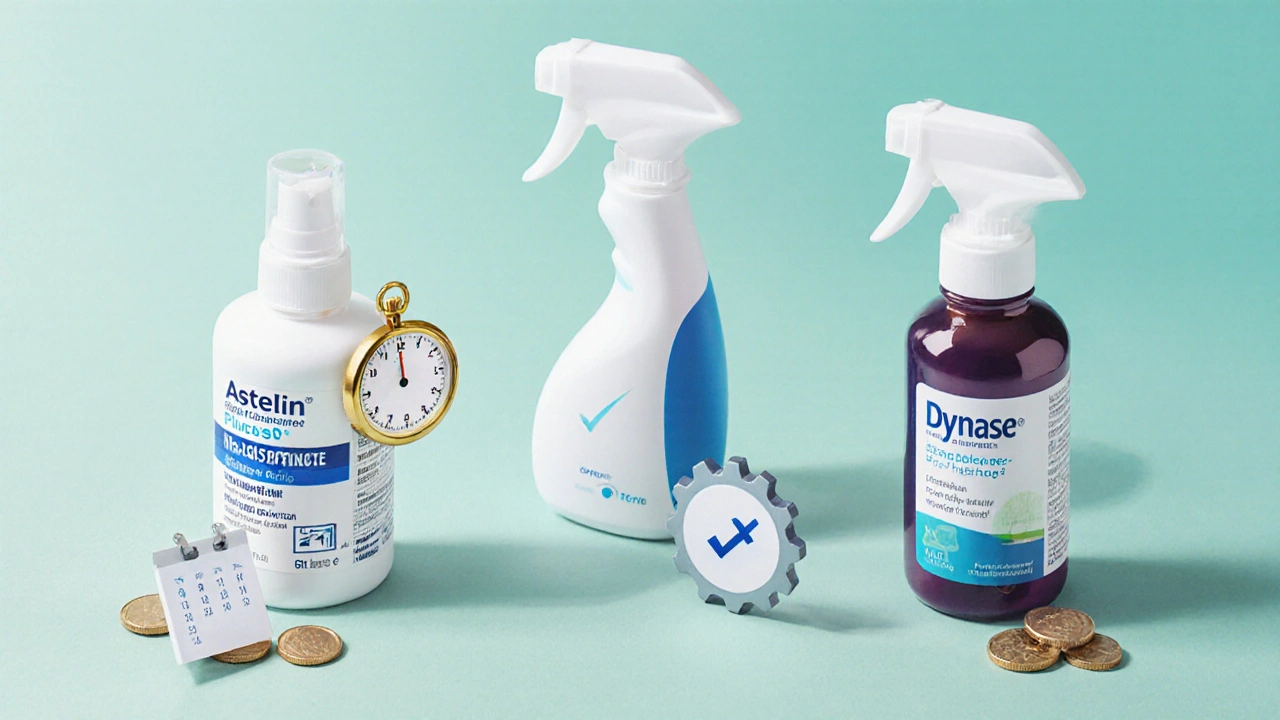
Side‑by‑Side Comparison
| Product | Type | Onset | Typical Duration | Prescription? | Average Monthly Cost (USD) | Best For |
|---|---|---|---|---|---|---|
| Astelin (azelastine) | Antihistamine | 5‑15min | ≈12h | Yes | $80‑$120 | Fast relief of sneezing/runny nose |
| Flonase (fluticasone) | Steroid | 12‑24h | ≥24h | No (OTC) | $15‑$25 | Daily control of chronic inflammation |
| Nasonex (mometasone) | Steroid | 12‑24h | ≥24h | Yes | $30‑$45 | Patients needing strong anti‑inflammatory effect |
| Rhinocort (budesonide) | Steroid | 12‑24h | ≥24h | No (OTC) | $20‑$30 | Those preferring OTC steroid formulation |
| Patanase (olopatadine) | Antihistamine | 5‑10min | ≈12h | Yes | $70‑$100 | Patients who dislike the after‑taste of azelastine |
| Dymista (azelastine+fluticasone) | Combo (antihistamine+steroid) | 5‑15min (antihistamine) + 12‑24h (steroid) | ≥24h | Yes | $100‑$150 | Severe or mixed‑type allergic rhinitis |
| Generic azelastine | Antihistamine | 5‑15min | ≈12h | Yes (often covered) | $25‑$45 | Budget‑conscious users needing quick relief |
When to Choose Astelin Over the Rest
If you need relief within minutes-say you’re at a concert and a pollen surge hits-you’ll probably reach for an antihistamine spray first. Astelin’s rapid onset beats every steroid on the list, which typically need a day or two of consistent use before you feel the difference.
Scenarios where Astelin shines:
- Acute flare‑ups: sudden sneezing fits or a runny nose that interrupts work or school.
- Combination therapy: Some doctors prescribe Astelin alongside a steroid for layered protection; the steroid handles swelling while Astelin tackles the immediate histamine rush.
- Pregnancy safety: Azelastine is classified as Category B (no proven risk in animal studies) and is often preferred over oral antihistamines that may cause drowsiness.
- Patients avoiding steroids: If you’ve been told steroids aren’t ideal because of glaucoma, cataracts, or uncontrolled diabetes, an antihistamine‑only spray can be a safer route.
On the flip side, if your symptoms are chronic-like year‑round dust allergies-you’ll likely need a steroid spray for its anti‑inflammatory power. In that case, a daily Flonase or Nasonex regimen may be more cost‑effective and provide steadier relief.
Cost, Insurance, and Accessibility
Insurance coverage varies widely. Many plans treat Astelin as a specialty drug and may require prior authorization, pushing the out‑of‑pocket price toward the $80‑$120 range. Generic azelastine, however, is often listed on formularies and can drop the monthly bill to under $50.
Steroid sprays like Flonase and Rhinocort are OTC, so you can buy them without a prescription and typically spend $15‑$30 a month. Nasonex sits in the middle: prescription required, but many insurance plans cover it at a co‑pay similar to generic azelastine.
Tip: Check your pharmacy’s discount cards. Some big‑box chains offer a “buy‑one‑get‑one‑free” for OTC steroids, which can make a year’s supply cost less than a single month of Astelin.
Safety Profile & Common Side Effects
All nasal sprays share a few baseline concerns: nasal irritation, dryness, and rare nosebleeds. Here’s how they differ:
- Astelin (azelastine): bitter/metallic after‑taste in up to 30% of users; mild headache; very low risk of systemic side effects.
- Flonase, Nasonex, Rhinocort (steroids): risk of nasal septum perforation with overuse; possible mild growth suppression in children if used long‑term (>6months).
- Patanase (olopatadine): similar quick‑onset profile; less after‑taste but can cause mild eye irritation.
- Dymista (combo): combines side‑effects of both classes; some users report an initial bitter taste that fades after a week.
Always rinse your nostrils with saline after using a spray if you notice dryness-this helps keep the lining healthy.
Quick Decision Checklist
- Need relief in <30minutes? → Choose Astelin (or generic azelastine).
- Want a daily, low‑cost solution for chronic symptoms? → Flonase or Rhinocort.
- Severe inflammation plus quick relief? → Dymista or Astelin + a steroid.
- Pregnant or breastfeeding? → Astelin or generic azelastine (consult your OB‑GYN).
- Insurance doesn’t cover prescription antihistamines? → Switch to generic azelastine or consider OTC steroid.
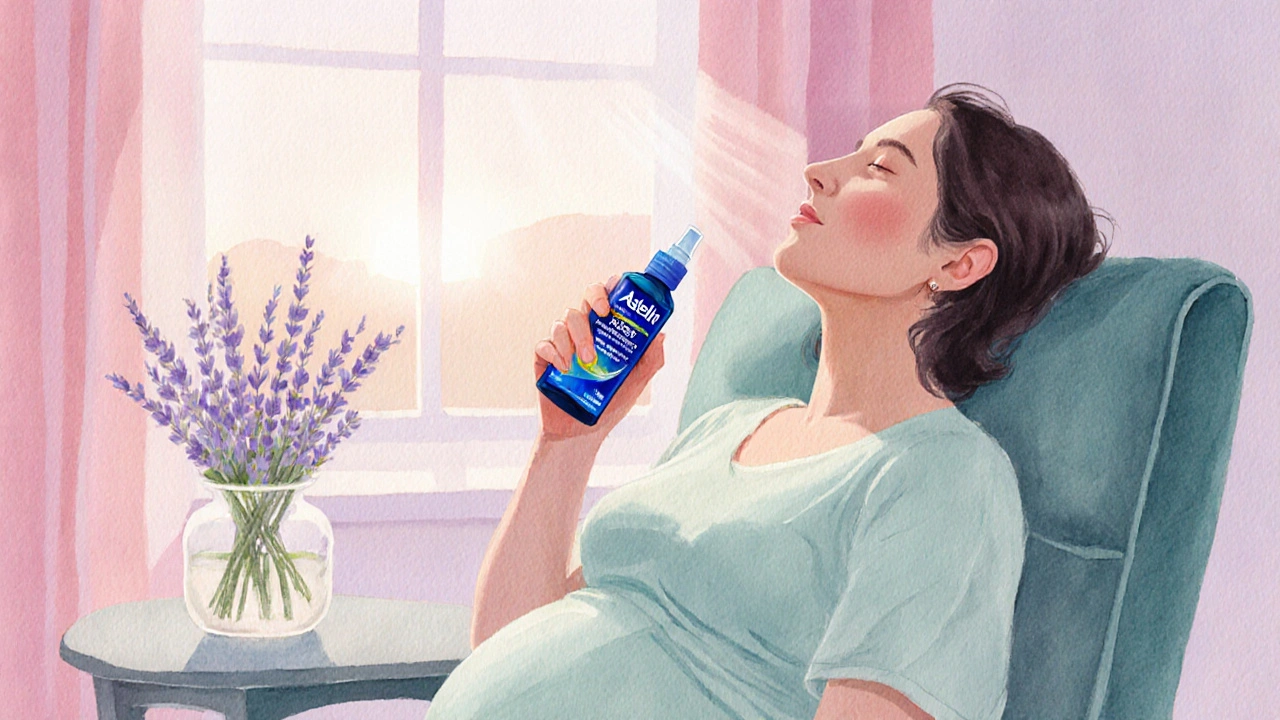
Frequently Asked Questions
Can I use Astelin and Flonase together?
Yes. Many allergists recommend a combo: use Astelin for quick relief (twice daily) and Flonase once daily for long‑term inflammation control. Just space the sprays by a few minutes to avoid mixing the formulations.
Is the bitter taste from Astelin harmful?
No. The metallic after‑taste is a known side effect of azelastine. It usually fades after a week of consistent use. Drinking a glass of water or using a saline rinse afterward can lessen it.
Can children use Astelin?
Astelin is approved for patients 12years and older. For younger children, doctors often prescribe a steroid spray like Flonase, which is FDA‑cleared for ages 4 and up.
How long can I stay on a steroid nasal spray?
Most guidelines say you can use a steroid spray continuously for up to 12months, provided you’re monitored for side effects. If symptoms improve, you can step down to a lower dose or alternate days.
Is there any drug interaction with Astelin?
Because azelastine is minimally absorbed systemically, it rarely interacts with other meds. However, if you’re on oral antihistamines, you may experience additive drowsiness, so monitor how you feel.
Picking the right nasal spray boils down to timing, cost, and personal health factors. Use the table, the checklist, and the FAQs as your toolbox, and you’ll be able to treat allergic rhinitis with confidence-whether you opt for Astelin’s rapid kick‑in or a steroid’s steady calm.


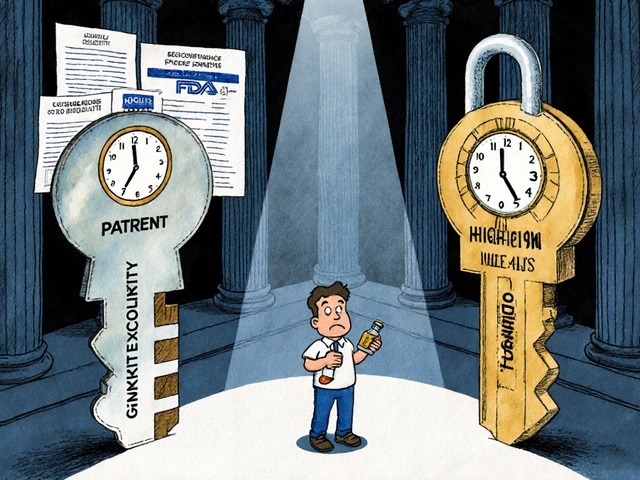
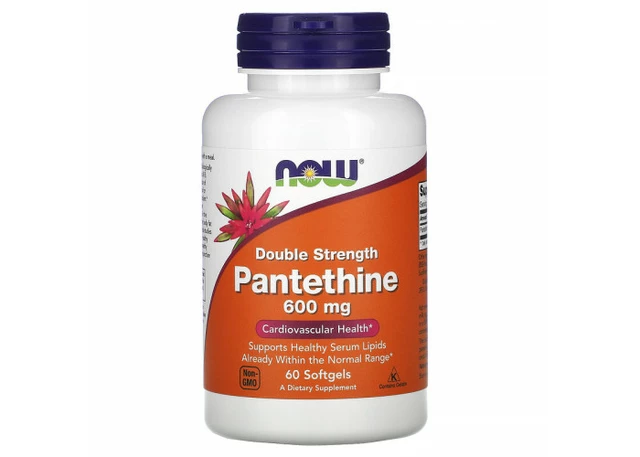

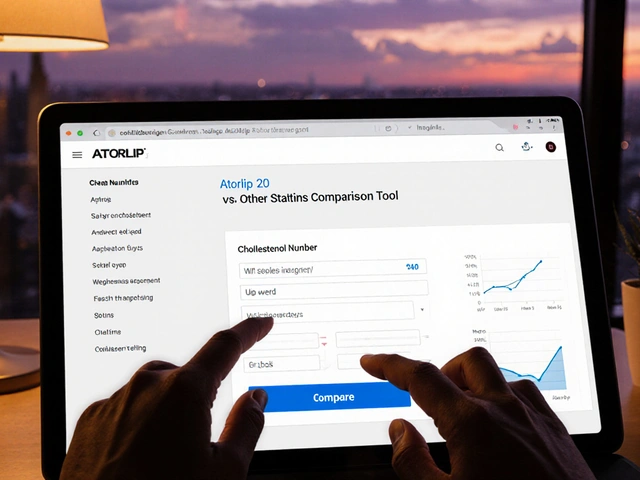
Alright, you’ve got a toolbox of nasal sprays-pick the one that matches your symptom timeline; Astelin works in minutes, steroids need days, and combos cover both! Stay consistent, track your response, and adjust as needed.
💡Quick tip: if you hate the after‑taste, give Patanase a try-same speed, smoother finish! 😊
When allergy season rolls in, the first thing most people reach for is a nasal spray that promises instant relief.
Astelin, with its azelastine core, delivers that promise by blocking histamine receptors straight at the source.
Within five to fifteen minutes you’ll notice a drop in sneezing, itching, and that maddening runny nose.
The trade‑off, however, is the notorious bitter after‑taste that lingers like an unwelcome guest.
Steroid options such as Flonase, Nasonex, or Rhinocort take their sweet time-typically twelve to twenty‑four hours before you feel the anti‑inflammatory calm.
Their strength lies in taming chronic swelling, making them the go‑to for year‑round dust or pet dander allergies.
Dymista cleverly marries the best of both worlds, pairing azelastine’s rapid action with fluticasone’s long‑lasting suppression.
This combo can be a game‑changer for sufferers with mixed‑type rhinitis, yet its price tag often exceeds one hundred dollars a month.
For the budget‑conscious, generic azelastine drops the cost dramatically while keeping the speedy kickoff.
Meanwhile, Patanase offers an alternative antihistamine that sidesteps the metallic taste, though it sits in a similar price bracket to the brand‑name Astelin.
If you’re pregnant, azelastine‑based sprays are generally classified as Category B, making them a safer bet than many oral antihistamines.
Conversely, long‑term steroid use should be monitored in patients with glaucoma or uncontrolled diabetes due to systemic absorption risks.
Real‑world adherence often hinges on convenience-two sprays per nostril twice a day for Astelin versus a once‑daily drip for many steroids.
Insurance formularies frequently push generic azelastine forward, turning what seems like a specialty drug into an affordable staple.
Bottom line: match the spray to your symptom pattern, budget, and medical considerations, and you’ll turn the tide on that relentless sneeze fest.
Nice breakdown-good to see the pros and cons laid out clearly.
One must consider the epistemic hierarchy of immediacy versus sustainability when selecting a therapeutic agent for allergic rhinitis.
While the previous comment extols immediacy, it overlooks the insidious cost of chronic steroid exposure; a short‑term antihistamine may be a flimsy band‑aid for a deeper systemic issue. Moreover, the assertion that azelastine is “generally safe” is a bit over‑simplified-clinical data still flags rare drowsiness and possible mucosal irritation. In practice, a judicious rotation between classes often yields better outcomes than a blind allegiance to any single product. Definately consider patient‑specific factors before drawing a blanket conclusion.
🚀💪 When you align your treatment with the rhythm of your symptoms, you empower your body to fight back-think of Astelin as the sprint, steroids as the marathon, and combos as the relay race. Choose wisely, and the finish line becomes a sneeze‑free horizon! 🌟
Honestly the whole sprint vs marathon analogy is just overblown the reality is you just need something that stops the drip you know.
Most people don’t even need a prescription; over‑the‑counter options work fine for mild cases.